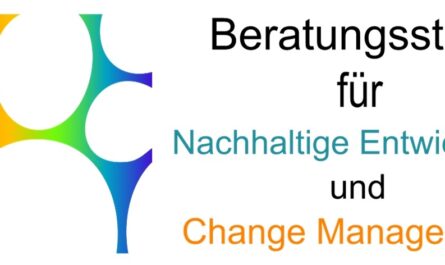Global crop protection chemicals market is projected to witness a CAGR of 4.3% during the forecast period 2024-2031, growing from USD 70.31 billion in 2023 to USD 98.62 billion in 2031. The expansion of the market can be attributed to an ever-growing agriculture -based economy that comprises numerous agricultural-related products, including crop protection chemicals. Crop protection chemicals are considered an important asset that delivers an imperative contribution to large agricultural practices, while eliminating pest attacks and significantly controlling weeds that carry the potential to affect crop yield by deteriorating essential nutrients, water, etc. The rising concerns for global food security have enabled the incorporation of crop protection chemicals that subsequently assist in meeting the demand for food from the perspective of a rapidly growing population.
Technological advances and progressive initiatives are successfully contributing to novel crop protection formulations, which aim at fostering sustainable practices and producing health-effective food crops. The market is heavily regulated by government bodies and rules and regulations ensuring safe utilization of crop protection chemicals while fulfilling compliance with evolving standards. The market is highly influenced by the end-user segment that correlates with the regional demographics and climatic conditions, which drives the market dynamics exclusively.
The global crop protection chemicals market is prominently driven by the rising popularity of sustainable agricultural practices that successfully use sustainable bio-based chemicals that assist in producing protection chemicals. Precision farming and digital agriculture have taken agricultural practices to the next level as technology like IoT combined with GPS and GIS has enabled farmers to optimize their decision-making processes.
Enhancing Food Security Amidst Population Growth
The growing concern for global food security due to the population explosion has successively led to the growth of the global crop protection chemicals market. The inclusion of crop protection chemicals in various agricultural practices has always delivered a positive approach to fulfilling food security concerns by ensuring an ample and reliable food supply. The massive demand to feed such a huge population has always remained a tremendous concern for every country, which has motivated them to adopt progressive measures for improving farming practices and producing excess food crops with available limited resources.
According to the United Nations Population Fund (UNFP), by the end of 2023, the global population has incredibly crossed the mark of 8 billion, which is a huge concern to feed and embark with proper nutrients. Crop protection chemicals play a crucial role in safeguarding crops from pests, diseases, and weeds, thereby preserving yields and contributing to the overall goal of achieving food security. Apart from ensuring a good and optimum crop yield, these crop protection chemicals also act as a catalyst in meeting the nutritional needs of a burgeoning population.
According to predictions of the Food and Agriculture Organization of the United Nations, feeding a world population that would reach 9.1 billion people in 2050 would require a 70% increase in overall food production by 2050.
Click: https://www.marketsandata.com/industry-reports/crop-protection-chemicals-market
Growing Production and Need for Better Agricultural Products
The demand for effective agricultural products has experienced a massive rise due to increasing health consciousness among consumers. Technological advances have popularly emphasized the importance of adopting optimized protection chemicals that can not only prevent parasitic attacks but also generate good food crops. With disposable incomes rising globally, consumer expectations for better agricultural products extend beyond quantity. As a result, there is an increasing emphasis on providing food crops with enhanced quality, safety and nutritional value. The implementation of precision farming technology has significantly assisted farmers in determining the criteria for selecting crop protection chemicals according to the suitability of crops. Before applying such chemicals to the crops, a trained farmer will run extensive research to collect essential data based on soil and crop characteristics using a GIS-enabled map. This kind of practice will successfully reduce enormous amounts of time and shift focus to determine other essential parameters for building crop-friendly production.
Increasing Use of Biopesticides in Agriculture
The market witnessed a surge in the development and adoption of biopesticides, which are derived from natural substances such as plants, bacteria, and fungi. In a major consumption shift, consumer preferences are changing, and the demand and awareness of organic and sustainably produced food is growing with minimal synthetic chemical inputs. Biopesticides contribute to organic farming practices, meeting consumer preferences for pesticide-residue-free produce.
The Food and Agriculture Organization of the United Nations (FAO) and the EU have also advocated for the use of natural predators and biopesticides in conjunction with mixed cropping and rotation where possible to reduce the impact of synthetic fertilizers on human health and the environment. Currently, more than two million tons of pesticides are used globally each year, the majority of which are herbicides (50%), followed by insecticides (30%), fungicides (18%), and other types such as rodenticides and nematicides. Currently, biopesticides hold a share below 10% in the application of pesticides in agriculture, and with growing demand for sustainable and natural chemicals, biopesticides are poised to gain a significant share in the global crop protection chemicals market.
Growing Palm Cultivation Boosting Demand for Bio-based Crop Protection Chemicals
The cultivation of oil palms has grown multiplefold in the past decades due to the growing demand for palm oil across various industries worldwide. Oil palm production has been colossal around 80 million metric tons over the past years. Today, Southeast Asia is the core of global palm oil production, with Indonesia and Malaysia generating over 85% of the world’s supply.
The cultivation of oil palm requires heavy utilization of fertilizers, pesticides, and herbicides, and they are preferred to be sourced naturally. The growth rate of oil palm cultivation is staggering and as of now, palm oil is the highest cultivated edible oil in the world. As the demand for palm oil will increase in the future, so does its agriculture, and with growing agriculture, the demand for bio-based crop protection chemicals will soar.
Rules and Regulations
Various governments across the globe have formed strict and detailed rules and policies that regulate the crop protection chemicals market. Apart from the various governments, global institutions such as the World Health Organization (WHO) constantly publish their guideline for crop protection chemicals in the interest of human health and environmental sustainability. For instance, in Australia, the government issues an agricultural chemical user permit (ACUP) to people who either intend to purchase or use specified ‘restricted supply’ chemicals. The United States regulates pesticides with comprehensive jurisdiction granted by two key statutes: the Federal Insecticide, Fungicide, and Rodenticide Act and the Federal Food, Drug, and Cosmetic Act. The Food Quality Protection Act and the Pesticide Registration Improvement Act have amended these laws. The Federal Insecticide, Fungicide, and Rodenticide Act (FIFRA) requires all pesticides sold or distributed in the United States (including imported pesticides) to be registered by the EPA.
Future Market Scenario (2024 – 2031F)
- The demand for crop protection chemicals will continue to increase in the coming years because of the high demand for agricultural produce.
- As environmental concerns gain prominence, the application of more sustainable and eco-friendly crop protection chemicals will gain significance.
- Government agencies and rules and regulations can impact market dynamics in a positive direction.
- The chemical formulations will keep on developing in the foreseeable future due to changing consumer requirements, depending upon geographical and environmental factors.
Report Scope
“Crop Protection Chemicals Market Assessment, Opportunities and Forecast, 2017-2031F” , is a comprehensive report by Markets and data, providing in-depth analysis and qualitative and quantitative assessment of the current state of the global crop protection chemicals market, industry dynamics, and challenges. The report includes market size, segmental shares, growth trends, future market scenario, opportunities, and forecast between 2024 and 2031. Additionally, the report profiles the leading players in the industry mentioning their respective market share, business model, competitive intelligence, etc.
Contact
Mr. Vivek Gupta
5741 Cleveland street,
Suite 120, VA beach, VA, USA 23462
Tel: +1 (757) 343-3258
Email: info@marketsandata.com
Website : https://www.marketsandata.com










